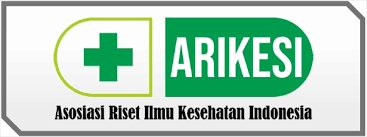Evaluation of Therapeutic Antibiotics After Laparoscopic Cholecystectomy: A Quasi- Experimental Study
Abstract
Background: The routine use of postoperative therapeutic antibiotics after laparoscopic cholecystectomy remains controversial due to limited evidence of clinical benefit and concerns over antimicrobial resistance. Objective: To evaluate the effect of postoperative therapeutic antibiotics on surgical site infections (SSI) and laboratory outcomes after laparoscopic cholecystectomy. Methods: A quasi-experimental, post-testonly study with a non-equivalent control group was conducted at RSUP Prof. Dr. I.G.N.G. Ngoerah (September 2023–March 2024). Fifty-six patients were divided into two groups: postoperative antibiotics (cefoperazone followed by cefixime) versus no antibiotics. SSI was assessed on postoperative days 7 and 30 using the ASEPSIS scoring system. Laboratory parameters (leukocytes, neutrophils, lymphocytes, hemoglobin, and platelet counts) were compared between groups. No SSI occurred in either group. Laboratory outcomes showed no
statistically significant differences between the antibiotic and non-antibiotic groups (p > 0.05). Results: The mean age of participants was 45.2 ± 15.1 years, with female predominance. Conclusion: Postoperative therapeutic antibiotics did not reduce SSI rates or alter laboratory outcomes following
laparoscopic cholecystectomy. Routine use is not supported in mild to moderate cases, and limiting unnecessary antibiotics may help reduce antimicrobial resistance.
Keywords
Full Text:
PDFReferences
Azoury, S. C., Farrow, N. E., Hu, Q. L., Soares, K. C., Hicks, C. W., Azar, F., Rodriguez-Unda, N., Poruk, K. E., Cornell, P., & Burce, K. K. (2015). Postoperative abdominal wound infection-epidemiology, risk factors, identification, and management. Chronic Wound Care Management and Research, 137-148.
Azriyantha, M. R., & Manjas, A. (2022). Characteristics of Cholelithiasis Patients in Dr. Achmad Mochtar General Hospital Bukittinggi on January 2019-December 2020. Bioscientia Medicina: Journal of Biomedicine and Translational Research, 6(2), 1405-1410.
Blumetti, J., Luu, M., Sarosi, G., Hartless, K., McFarlin, J., Parker, B., Dineen, S., Huerta, S., Asolati, M., & Varela, E. (2007). Surgical site infections after colorectal surgery: do risk factors vary depending on the type of infection considered? Surgery, 142(5), 704-711.
Chang, Y. R., Jang, J.-Y., Kwon, W., Park, J. W., Kang, M. J., Ryu, J. K., Kim, Y. T., Yun, Y.-B., & Kim, S.-W. (2013). Changes in demographic features of gallstone disease: 30 years of surgically treated patients. Gut and Liver, 7(6), 719.
Colling, K. P., Besshoff, K. E., Forrester, J. D., Kendrick, D., Mercier, P., & Huston, J. M. (2022). Surgical infection society guidelines for antibiotic use in patients undergoing cholecystectomy for gallbladder disease. Surgical Infections, 23(4), 339-350.
de Santibañes, M., Glinka, J., Pelegrini, P., Alvarez, F. A., Elizondo, C., Giunta, D., Barcan, L., Simoncini, L., Dominguez, N. C., & Ardiles, V. (2018). Extended antibiotic therapy versus placebo after laparoscopic cholecystectomy for mild and moderate acute calculous cholecystitis: a randomized double-blind clinical trial. Surgery, 164(1), 24-30.
Dembinski, J., Guérin, O., Slim, K., Navarro, F., Paquet, J.-C., Tuech, J.-J., Pocard, M., Mauvais, F., Faucheron, J.-L., & Regimbeau, J.-M. (2020). Are the recommendations for post-operative antibiotics in patients with grade I or II acute calculous cholecystitis being applied in clinical practice? HPB, 22(7), 1051-1056.
Diener, M. K., Knebel, P., Kieser, M., Schüler, P., Schiergens, T. S., Atanassov, V., Neudecker, J., Stein, E., Thielemann, H., & Kunz, R. (2014). Effectiveness of triclosan-coated PDS Plus versus uncoated PDS II sutures for prevention of surgical site infection after abdominal wall closure: the randomised controlled PROUD trial. The Lancet, 384(9938), 142-152.
Fico, V., La Greca, A., Tropeano, G., Di Grezia, M., Chiarello, M. M., Brisinda, G., & Sganga, G. (2024). Updates on Antibiotic Regimens in Acute Cholecystitis. Medicina, 60(7), 1040.
Kim, S. B., Kim, K. H., Kim, T. N., Heo, J., Jung, M. K., Cho, C. M., Lee, Y. S., Cho, K. B., Lee, D. W., & Han, J. M. (2017). Sex differences in prevalence and risk factors of asymptomatic cholelithiasis in Korean health screening examinee: A retrospective analysis of a multicenter study. Medicine, 96(13), e6477.
Littlefield, A., & Lenahan, C. (2019). Cholelithiasis: presentation and management. Journal of Midwifery & Women’s Health, 64(3), 289-297.
Menz, B. D., Charani, E., Gordon, D. L., Leather, A. J. M., Moonesinghe, S. R., & Phillips, C. J. (2021). Surgical antibiotic prophylaxis in an era of antibiotic resistance: common resistant bacteria and wider considerations for practice. Infection and Drug Resistance, 5235-5252.
Mihaljevic, A. L., Michalski, C. W., Erkan, M., Reiser-Erkan, C., Jäger, C., Schuster, T., Schuhmacher, C., Kleeff, J., & Friess, H. (2012). Standard abdominal wound edge protection with surgical dressings vs coverage with a sterile circular polyethylene drape for prevention of surgical site infections (BaFO): study protocol for a randomized controlled trial. Trials, 13, 1-11.
Ngoerah, R. P. dr. I. G. N. G. (2024). PPAB Edisi III. Dokumen internal: Instalasi Farmasi Klinik. RSUP Prof. dr. I.G.N.G. Ngoerah.
Passos, M. A. T., & Portari-Filho, P. E. (2016). Antibiotic prophylaxis in laparoscopic cholecistectomy: is it worth doing? ABCD. Arquivos Brasileiros de Cirurgia Digestiva (São Paulo), 29(03), 170-172.
Pinkney, T. D., Calvert, M., Bartlett, D. C., Gheorghe, A., Redman, V., Dowswell, G., Hawkins, W., Mak, T., Youssef, H., & Richardson, C. (2013). Impact of wound edge protection devices on surgical site infection after laparotomy: multicentre randomised controlled trial (ROSSINI Trial). Bmj, 347.
Regimbeau, J. M., Fuks, D., Pautrat, K., Mauvais, F., Haccart, V., Msika, S., Mathonnet, M., Scotté, M., Paquet, J. C., & Vons, C. (2014). Effect of postoperative antibiotic administration on postoperative infection following cholecystectomy for acute calculous cholecystitis: a randomized clinical trial. Jama, 312(2), 145-154.
Sajid, M. S., Bovis, J., Rehman, S., & Singh, K. K. (2018). Prophylactic antibiotics at the time of elective cholecystectomy are effective in reducing the post-operative infective complications: a systematic review and meta-analysis. Translational Gastroenterology and Hepatology, 3, 22.
Smith, J. A., & Lee, M. T. (2025). Advances in preventing surgical site infections. Surgical Site Infection. 12(3), 145-153.
Song, Y., Ma, Y., Xie, F.-C., Jin, C., Yang, X.-B., Yang, X., Long, J.-Y., Wang, D.-X., Sang, X.-T., & Li, L.-M. (2022). Age, gender, geographic and clinical differences for gallstones in China: a nationwide study. Annals of Translational Medicine, 10(13), 735.
DOI: http://dx.doi.org/10.30742/jikw.v14i2.4666
Refbacks
- There are currently no refbacks.
Copyright (c) 2025 Komang Abdi Baskara Mayun, Ketut Sudartana, Wayan Sudarsa, Made Agus Dwianthara Sueta, Ketut Sudiasa, Ida Bagus Budiarta

This work is licensed under a Creative Commons Attribution-NonCommercial 4.0 International License.
Jurnal Ilmiah Kedokteran Wijaya Kusuma is licensed under a Creative Commons Attribution-NonCommercial 4.0 International License










